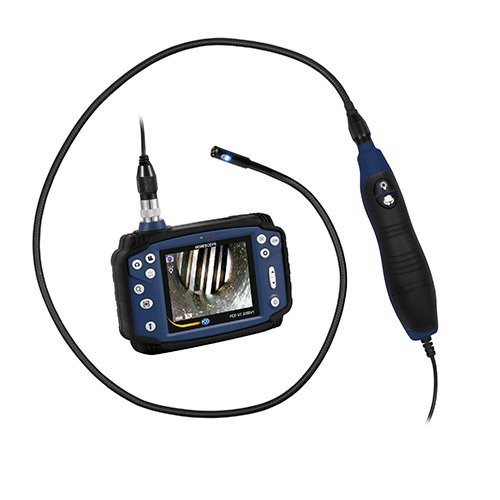


Remote Visual Inspection / Borescope
Remote Visual Inspection or Remote Digital Video Inspection, also known as RVI or RDVI, is a form of visual inspection which uses visual aids including video technology to allow an inspector to look at objects and materials from a distance because the objects are inaccessible or are in dangerous environments. RVI is also a specialty branch of non-destructive testing (NDT). Technologies include but not limited to rigid or flexible borescopes, videoscopes, fiberscopes, push cameras, pan/tilt/zoom cameras and robotic crawlers. Remote are commonly used where distance, angle of view and limited lighting may impair direct visual examination or where access is limited by time, financial constraints or atmospheric hazards. RVI/RDVI is commonly used as a predictive maintenance or regularly scheduled maintenance tool to assess the “health” and operability of fixed and portable assets. RVI/RDVI enables greater inspection coverage, inspection repeatability and data comparison. The “remote” portion of RVI/RDVI refers to the characterization of the operator not entering the inspection area due to physical size constraints or potential safety issues related to the inspection environment.
Visual Inspection Solutions
When you need to inspect difficult-to-access areas, Olympus borescopes and visual inspection equipment are portable, intelligent solutions that meet the demands of modern industrial inspections. A host of advanced, intuitive features and a wide range of borescope, videoscope, and fiberscope lengths, diameters, and viewing options make our remote visual inspection solutions versatile for many applications.
Applications
Advantages

+91 63839 92501
admin@u-sonix.com